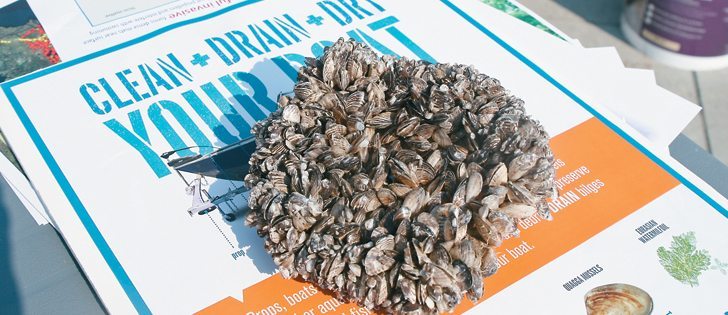Lack of staff, funding | Potash was used to control zebra mussels in Lake Winnipeg, but they are still spreading
Manitoba worked hard for years to keep zebra mussels out of Lake Winnipeg, but it appears the Russian invaders are here to stay following an infestation that was discovered last year.
“For Lake Winnipeg, right now, it looks like adaptation,” said biologist Laureen Janusz with Manitoba Conservation.
An intensive campaign to inject liquid potash around lake harbours last year appeared to be effective, but later inspections found larvae and adults in other parts of the lake.
“We won’t be treating next year,” she said in an interview during the Alberta Irrigation Projects Association annual meeting in Calgary Nov. 25.
Read Also

Using artificial intelligence in agriculture starts with the right data
Good data is critical as the agriculture sector increasingly adopts new AI technology to drive efficiency, sustainability and trust across all levels of the value chain.
“We will be waiting to see how successful they are in establishing and how quickly they will move.”
Control may have worked if the mussels had been found in a smaller water body, but Lake Winnipeg is too big to control all unwanted species.
Adult mussels start spawning when the water reaches 10 C. A single female can lay one million eggs in a season.
The mussels filter the water, consume green algae and excrete toxic blue green algae. The water is then clear, which results in increased light penetration that affects the habitat of other aquatic species.
The mussels have not been found in Manitoba irrigation infrastructure.
Alberta has launched a major public awareness campaign to keep the mussels out of the province because of concerns about how they would affect the $14 billion water infrastructure system.
The mussels attach themselves to irrigation equipment, electrical generation plants, drinking water systems and water diversions. The shells clog the water works and are extremely difficult to remove.
Alberta intercepted two boats last summer that were carrying mussels: one from New York and the other from Ontario.
The Manitoba zebra mussels project had received $40,000 to operate inspection stations and do surveillance. More money was sought but was not forthcoming.
As well, the conservation invasive species specialist went on maternity leave and there was no budget to fill her job.
“Not only from a staff and financial resources perspective, we were ill prepared for this detection and we had our first experience in responding to zebra mussels in one of the largest lakes in Manitoba,” Janusz said.
Zebra mussels were detected in Manitoba in October of last year.
A risk assessment showed that most of southwestern and central Manitoba could support high to moderate levels of infestation, but there was not a specific control program for the province.
“We had roughly three weeks to figure out the extent of zebra mussels within this lake,” she said.
Officials believed it was an early infestation targeting four harbours.
Potash was recommended for control and eradication. Potassium chloride is toxic to zebra mussels and has a small impact on the environment but is not toxic to higher life forms.
They were able to gain regulatory approvals quickly and convinced all stakeholders that doing nothing was a greater risk.
The lake supports a $24 million fishery and there was concern the treatments would overlap with the fishing season.
Fortunately, the spring was cold and the government was able to start the treatments May 23.
By early July, all involved felt en-couraged that the treatment had worked. However, they soon learned the mussels had spread.
The most recent report from a month ago found mussels at nine of 17 inspection stations. They survived the winter and are spreading.
“It just really brought home at that point how prolific they are,” she said.
The mussels have not reached the lake’s northern basin, and conservation officials hope vigilant surveillance keeps them out of that region as well as from spreading to other water bodies.
Manitoba had conducted 2,819 water craft inspections by the end of October, and 136 boats were decontaminated.
Janusz’s department has tried to step up its media campaign and public outreach to educate people about cleaning, draining and drying boats, but changing behaviour is difficult.
barbara.duckworth@producer.com
















